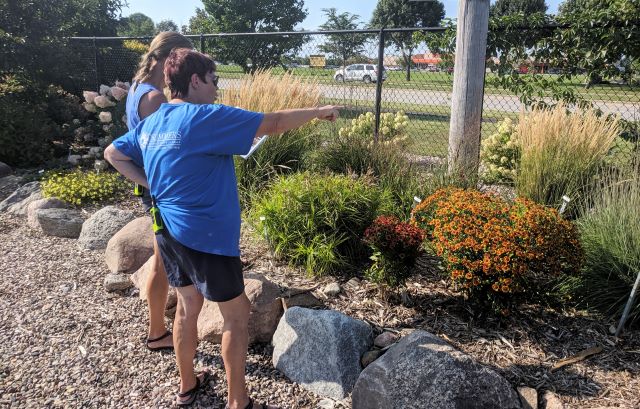
Landscape Design Using Perennials
In this Elements of Landscape Design Series post we are focusing on landscape design using perennials to accomplish your landscape vision.
Incorporating perennials into a garden is a wonderful way to add beauty, diversity, and longevity to your outdoor space. Perennials are plants that live for more than two years, returning year-after-year, and they come in a wide variety of colors, sizes, and textures. Here are some steps to help you successfully incorporate perennials into your garden:
Assess your garden
Before choosing perennials, take a close look at your garden to determine its conditions. Observe the amount of sunlight different areas receive, the soil type, the moisture levels, and area dimensions. This information will help you select perennials that are well-suited to your specific garden conditions and have the best outcome.
Determine your design goals
Consider the overall aesthetic you want to achieve in your garden. Are you aiming for a cottage garden with a romantic, informal feel? Pastel colors are the go-to for a cottage garden. Or perhaps a modern garden with clean lines and bold colors? Understanding your design preferences will guide your choice of perennials and their arrangement.
Think into the future
As perennials mature they will fill in the space and one of the hardest things to do when planting perennials is to consider the spacing between the plants when they are at their mature size. Being impatient and filling out the space right away is going to cause problems in the future, as well as increased chances of fungal and disease issues.
Maintenance and care
As with any garden, perennials require regular maintenance. Be sure to provide proper watering, mulching, and fertilization based on the specific needs of each plant. Regularly deadhead spent blooms and remove any diseased or damaged foliage to promote healthy growth.
Plan for seasonality
Perennials can provide blooms and interest throughout the year. When selecting plants, pay attention to their flowering times to ensure you have a mix of perennials that bloom in different seasons. This way, you’ll have a continuous display of color and texture from spring to fall.
Choose a variety of heights and textures
Incorporate perennials with varying heights and textures to create visual interest and depth in your garden. Combine tall, vertical plants like delphiniums or hollyhocks with mid-height flowers such as coneflowers or salvias, and add low-growing groundcovers like creeping thyme or sedum for a layered effect. Depending on the viewing angle, place tall behind mid-height and then low groundcovers.
Consider foliage
While flowers are often the main attraction, don’t forget about foliage. Perennials with interesting foliage, such as ferns, coral bells, or ornamental grasses, can add texture and color even when not in bloom. Incorporating a mix of foliage types can provide year-round appeal in your garden.
Group plants according to their needs
Group perennials with similar growing requirements together. Consider their preferred light levels, moisture needs, and soil conditions. This will make it easier to care for the plants and ensure they thrive. For example, place sun-loving plants in areas with full sun and moisture-loving plants in areas that retain more moisture.
Create focal points
Use perennials to create focal points or anchor areas in your garden. Select a few standout plants, like ornamental grasses, tall flowering perennials, or shrubby varieties like hardy hibiscus, and place them strategically to draw the eye and add drama to your landscape. Small Hydrangea trees are another great focal point option!
Incorporate native species
Consider including native perennials in your garden. Native plants are adapted to the local climate and require less maintenance, making them an eco-friendly choice. They also provide habitat and food for native wildlife, helping to support biodiversity. Incorporate native species: Consider including native perennials in your garden. Native plants are adapted to the local climate and require less maintenance, making them an eco-friendly choice. They also provide habitat and food for native wildlife, helping to support biodiversity.
Remember that gardening is a dynamic process, and as your perennials mature and spread, you may need to divide or relocate them to maintain the desired look and prevent overcrowding. With time and attention, your garden will flourish, and you’ll enjoy the beauty and resilience of your perennial plants for years to come.
Read Landscape Design using Evergreens to incorporate the elegant, structural, and continuous color element to your landscape
